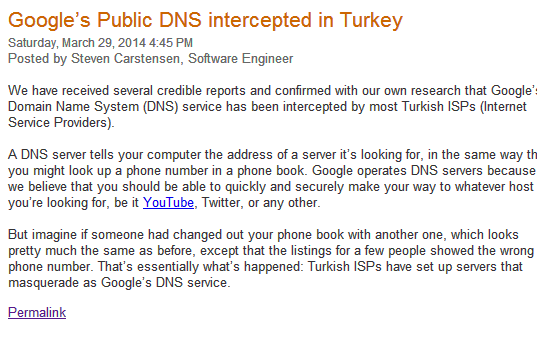Steve revealed in a brief blog post that the web giant had confirmed with its own research previous reports about the Twitter ban which began on March 20th. Google’s DNS servers had been used by netizens in the early days of the ban to circumvent ISP-level censorship, with their address 8.8.8.8 and 8.8.4.4 even graffittied onto public buildings and daubed on election posters by Turkish protestors to spread the message. That avenue was soon closed down, however, as explained by Carstensen: Twitter fans in the republic soon took to VPNs, TOR and other workarounds to get onto their favourite site, while the firm itself posted up advice on how to tweet via SMS. All of which has made the ban, and that of YouTube which followed last week, pretty ineffective. In fact, there were reports of a 138 per cent spike in Twitter usage in Turkey the day after the ban took effect. It may all be a moot point now anyway, after an Ankara court last week ordered the government ban to be lifted. This was in response to complaints by journalists and lawyers that it contravened their “freedom of information and communication“. ®

